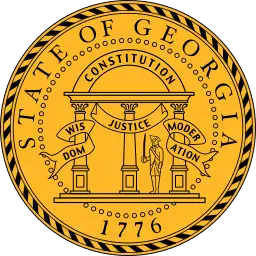…
There are about 10 officially approved physical therapy assistant schools in Georgia. They offer associate’s degree programs that generally take about two years to complete.
Students attend classes, take part in labs, and complete clinical rotations. The state does not require any work experience or on-the-job training, other than that received in school, to become a practitioner.
You Might Also Like:

The governor appoints eight members to this panel, which meets six times a year to supervise and regulate more than 2,000 licensed physical therapy assistants practicing in the state.
The board prepares and approves examinations for licensure, reviews the qualifications of applicants and issues licenses, enforces continuing education requirements, establishes standards for educational programs, investigates complaints against practitioners, and disciplines those who violate regulations.
To become a physical therapy assistant in this state, a student must first earn a high school diploma or GED. The next step is to enroll in a postsecondary institution that the Commission on Accreditation for Physical Therapy Education (CAPTE) recognizes. The school needs to have a PTA educational program that the Georgia State Board of Physical Therapy has approved.
Though PTA certificates and bachelor’s degree programs are available at some schools, most institutions offer either an associate of science (AS) or an associate of applied science (AAS) degree.
Curricula vary, but schools usually have required core courses in anatomy, physiology, medical terminology, kinesiology, rehabilitation, and therapy modalities and exercises. In addition, students typically perform two or more clinical internships that entail working 630 to 700 hours at hospitals, nursing homes, or outpatient centers.
A license, which qualifies a PTA for certification, is necessary to practice in the state. Applicants submit licensure applications, along with transcripts from the accredited schools they attended, to the Georgia State Board of Physical Therapy.
To earn a license, an applicant must pass the National Physical Therapy Exam, which covers topics such as PTA equipment, therapeutic modalities, safety and protection, professional responsibilities, research-based practice, interventions, and data collection.
The next mandate is to pass the Georgia Jurisprudence Exam (GJE), which requires answering 80 percent of the questions correctly. Students register for both tests by contacting the Federation of State Boards of Physical Therapy.
The license must be renewed every two years. In addition, practitioners have to complete 30 clock hours of continuing education every other year. They must either take a four-hour course in ethics and jurisprudence, or retake the GJE.
We selected the schools below based on the programs that they offer, accreditation, student population, graduation rate and reputation.
View our Ranking Methodology to learn more about how we rank schools.

21%
1228
AS and AAS degrees are available on eight campuses, including the one in Savannah. The programs involve six academic quarters, with classes in the evenings.
The curriculum covers physical therapy theory, training for various types of treatments, “how to educate patients,” and “how to communicate with people in need.” Students must successfully complete two clinical experiences, or externships, totaling 640 hours in real-world physical therapy facilities.
19%
6615
The AS degree program here consists of 74 credit hours, which students complete in four semesters. Prerequisites include CPR certification and malpractice insurance.
The curriculum begins with general education classes in English, humanities and fine arts, math, psychology, biology, and health and physical education. The ensuing courses are Introduction to Physical Therapy, Anatomy & Kinesiology, Clinical Pathology, Physical Agents, Patient Care Skills, Therapeutic Exercise, Neurology and Gait Analysis, and Neurological Rehabilitation.
Students also take part in three clinical practicums and attend a seminar.
38%
3681
Students may earn an AAS degree on this school’s campus in the small town of Forsyth. The program’s graduation rate has been 100 percent in recent years, and its employment rate for graduates exceeds 90 percent.
The five-semester, 76-credit-hour PTA program features general education classes in addition to these courses: Introduction to Physical Therapy, Patient Care Skills, Functional Anatomy and Kinesiology, Physical Therapy Procedures, Pathology, and Rehabilitation. There are three clinical experiences and one seminar.
40%
4493
Students here complete five semesters of coursework and practical experience to qualify for an AAS degree. The school admits only 12-15 program participants each year. Students must maintain CPR certification, as well as membership in the American Physical Therapy Association.
The curriculum includes 27 credit hours of general education classes and 49 hours in the following core courses: Introduction to PT, Patient Care Skills, PT Procedures, Functional Anatomy & Kinesiology, Rehabilitation, and Pathology. Students do three full-time clinical rotations for 15 weeks and attend a seminar.
41%
4595
Located in the city of the same name, this school offers an AAS program with graduation and employment rates of nearly 100 percent. Among the prerequisites for admission is at least 24 hours of experience as an employee or observer at a PT facility.
The 79-credit-hour program covers general education subjects as well as the following core courses: Anatomy and Physiology, Human Development, Introduction to PT, Patient Care Skills, Kinesiology, Physical Therapy Procedures, Pathology, and Rehabilitation. There are three clinical rotations and a seminar.
34%
6682
To be considered for admission to the occupational therapy assistant program here, a student must have already completed general education classes in English, math, humanities and fine arts, speech, psychology, and biology.
The AAS curriculum consists of 73 credit hours that take six semesters (more than two years) to complete. The final semester involves fieldwork.
The courses are Composition and Rhetoric, College Algebra, Anatomy & Physiology, Public Speaking, Introductory Psychology, Medical Terminology, Introductory Occupational Therapy, Growth & Development, Developmental Tasks, Analysis of Human Movement, Pediatric Issues, Physical Dysfunction, Therapeutic Adaptations, Psychosocial Dysfunction, Geriatric Issues, and Occupational Therapy Trends & Issues.
23%
10201
Fewer than two-thirds of those enrolled in this school’s AAS program graduate, but nearly all students who earn degrees pass the licensure tests and secure PTA employment. Applicants must have at least 24 hours of observation experience at physical therapy facilities.
Prerequisite courses in Composition and Rhetoric, College Algebra, Anatomy and Physiology, Physics, Psychology, and Human Development may be taken on any of CTC’s campuses or online. The four-semester, 76-credit-hour PTA program is available only on the North Metro campus.
30%
8045
The 76-credit-hour degree program here entails three semesters of coursework and an integrated clinic, followed by two long-term clinical experiences (36-40 hours per week) during the final semester.
Students receive classroom instruction and lab training in modern facilities that the school opened in 2018 on its Warner Robins campus. The initial requirement is to complete general education courses in Composition and Rhetoric, Introduction to Psychology, and Conceptual Physics; as well as a math class and a humanities / fine arts elective.
Core courses include Anatomy and Physiology, Human Development, Introduction to PT, Patient Care Skills, Kinesiology, PT Procedures, Pathology, and Rehabilitation.
Students may earn diplomas at various types of schools in different settings in Georgia. Large and small institutions, in rural and urban areas, offer PTA degrees.
The curricula generally feature general education classes, followed by core courses directly related to physical therapy. Students also work in labs, attend seminars, and get practical experience in PT facilities off campus.
The education and training that these programs provide give graduates all the knowledge and skills they need to pass licensure tests and become certified to become practitioners in Georgia.
$27
$57,000
35%
The median pay for a Georgia PTA (neary $57,000 annually or more than $27 per hour) is approximately the same as the national average (about $57,500 or over $27.50).
The top 10 percent of earners in the Peach State make salaries of $77,000-plus a year or hourly wages over $37, a bit less than the nationwide median of about $79,500 or more than $38. The difference is more pronounced for the bottom 10 percent, who receive $28,000-plus or about $13.50 in Georgia, compared with about $37,000 or more than $17 nationally.
The number of positions for PTAs in the state will increase from 1,920 in 2016 to 2,670 in 2026, according to the U.S. Bureau of Labor Statistics. That would be a job-growth rate of 35 percent, better than the predicted 31 percent nationwide.
Sources: U.S. Bureau of Labor Statistics, CareerOneStop
